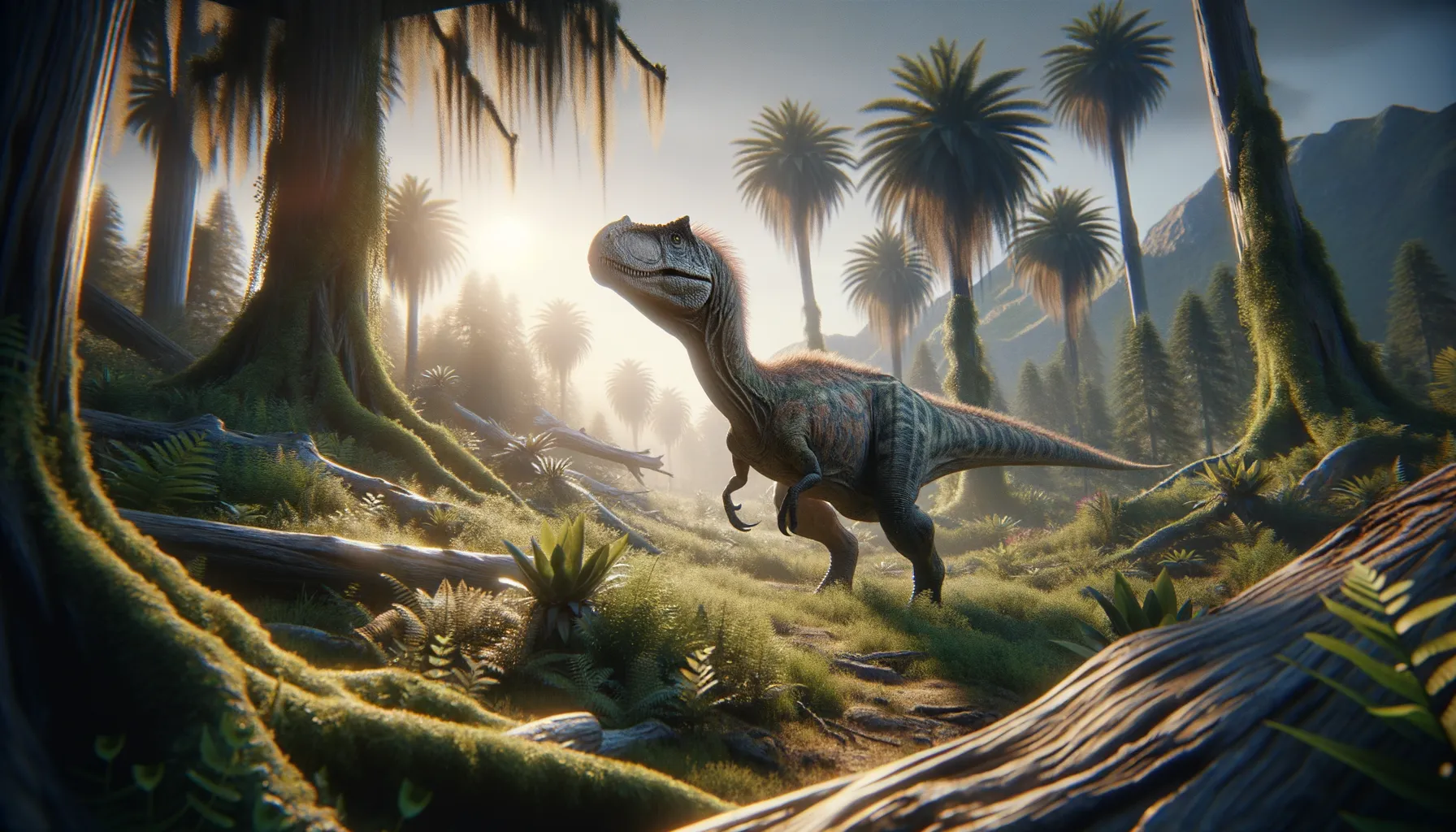
Othnielosaurus
Swift and nimble survivor of the Jurassic.
Period
Jurassic
Length
Roughly 2 meters in length.
Height
About 1 meter tall at the hip.
Weight
Approximately 10 to 20 kilograms.
Othnielosaurus was a small, agile dinosaur that roamed the Jurassic landscapes. Known for its speed, it was likely an herbivore that fed on a variety of plants. Its lightweight body allowed for quick movements, an advantageous trait in avoiding predators. The discovery of Othnielosaurus fossils has provided valuable insights into the diversity of dinosaur life during the Jurassic period.
Diet
Othnielosaurus primarily fed on plants. It likely consumed a variety of vegetation, including ferns and cycads, which were abundant during the Jurassic period.
Hunting
As an herbivore, Othnielosaurus did not hunt for food. It foraged for plants and used its speed to escape predators rather than engage them.
Environmental challenges
During the Jurassic period, Othnielosaurus faced environmental challenges such as changing climates and the threat of larger predators. The fluctuating climate could affect the availability of food sources, forcing it to adapt its foraging habits. Predators such as allosaurs posed a constant threat, necessitating quick reflexes and rapid escape tactics. Additionally, the occurrence of natural events like floods required this dinosaur to adapt quickly for survival.
Speed
Fast runner due to lightweight structure.
Lifespan
Estimated to be around 15 to 20 years.
First discovery
First discovered in the late 19th century in the United States.
Fun Facts
- Othnielosaurus was a small dinosaur from the Late Jurassic period, around 150 million years ago.
- It was named after Othniel Charles Marsh, a famous paleontologist from the 19th century.
- This dinosaur was in the group called ornithischians, known for their bird-like pelvic structure.
- Othnielosaurus was a herbivore, which means it primarily fed on plants.
- It is believed to have been a fast runner, helping it escape predators.
- Fossil evidence suggests that Othnielosaurus might have lived in what is now North America.
- Despite its small size, it had long legs, which were likely adapted for swift movement.
Growth and Development
Othnielosaurus grew relatively quickly to reach maturity, a strategy that helped it avoid becoming prey. Its lightweight bones contributed to fast growth, allowing it to develop into an agile adult. The juvenile Othnielosaurus likely lived in groups for protection and social learning.
Habitat
Othnielosaurus lived in a variety of habitats, such as forests and plains, where plant life was rich and diverse. These environments provided ample food and cover from predators. It thrived in regions with mild to warm climates, which supported a range of vegetation.
Interaction with other species
Othnielosaurus likely interacted with other herbivorous dinosaurs, either competing for resources or forming loose group associations for mutual protection. It also had to be constantly wary of carnivorous dinosaurs which posed a threat. The presence of various plant species in its habitat could sometimes lead to competition for specific food resources.
Natural lifespan
Othnielosaurus had a natural lifespan of around 15 to 20 years.
Reproduction
Like many dinosaurs, Othnielosaurus reproduced by laying eggs. It is believed that they nested in groups to protect their young from predators. The offspring were likely precocial, meaning they were relatively mature and mobile from a young age.
Social behaviour
Othnielosaurus likely lived and moved in herds, which provided safety in numbers from predators. This social structure might have facilitated the sharing of food resources and communal nesting sites. Herd living also allowed for social interactions which could have been crucial for young dinosaurs learning survival skills.
Fossil locations
Fossils of Othnielosaurus have been primarily found in North America, particularly in the Morrison Formation. This formation spans several U.S. states, including Colorado and Wyoming. These discoveries have helped paleontologists understand the distribution and diversity of small herbivorous dinosaurs during the Jurassic.
